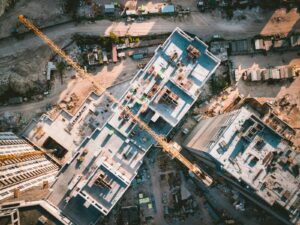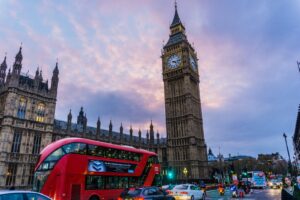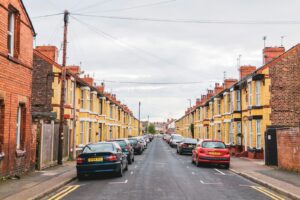Live’ architecture helps residents reclaim streets in Bristol
 ‘Hands On Bristol’ brings students and local communities together in ‘live’ architectural projects
‘Hands On Bristol’ brings students and local communities together in ‘live’ architectural projects
These projects ask students to step outside of the theoretical world of the university and learn through doing, by working on real projects in collaboration with community partners.
The projects are set up by the Department of Architecture at the University of the West of England’s (UWE) ‘Hands On Bristol‘ project. They bring together architecture students, educators and local communities, creating a unique learning opportunity for students whilst also empowering local citizens to make changes to their places and spaces.
In the 2015-16 academic year, Master of Architecture students engaged in a range of activities including the development of ‘Pocket Park’ projects for Ebenezer Gate, Bedminster and Under the Flyover in Hotwells, as well as direct action engagement with a local residents group in Totterdown.
At UWE the ‘live’ project has become part of the culture of the architecture school. It is a powerful model that allows student work to act as a catalyst for real change in the city. By engaging the public through public events, consultations and participatory design, the projects have the potential to empower local communities to take control of their own spaces, and make those spaces work better for them. Click through the pages below to see the result.
 Ebenezer Gate, Bedminster
Ebenezer Gate, Bedminster
The ‘Ebenezer Gate Pocket Park’ built on a long-standing relationship with Bedminster Town Team to collaborate on the re-use of a small pocket of disused space on North Street, Bedminster. Through a process of active community consultation, opinions of local residents were gathered and the idea of a storytelling park emerged. Curved benches for small groups and individuals were designed that create spaces for storytelling among new planting. The student project enabled the client to apply for funding to start the build process. Collaborating with architect George Lovesmith, maker Ooma and with timber donated by James Latham of Yate, the park was recently opened with live busking and storytelling. A local resident’s group – the ‘Ebenezer Angels’- has been set up to continue the evolution of the park and organize events in the space, giving the project a continuing life beyond the involvement of the university.
 Under the Flyover, Hotwells
Under the Flyover, Hotwells
Working with artist Anna Wilson, ‘Under The Flyover’ explored the potential of grassroots creativity to enhance an unloved public space beneath a flyover in Hotwells. As part of Bristol Green Capital 2015, students designed and built a series of portable bandstands. This unusual commission gave architectural students an opportunity to design and make temporary, mobile structures from recycled materials. Portable architecture along Bristol’s Portway (accompanied by the shocking pink-clad Ambling Band), created a temporary space for music and poetry performances. As with the Ebenezer Gate project, the student work led to a successful Pocket Park funding application, which allowed further consultation events with local young people who identified a need for spaces for older kids to play ball games, skate and socialise. Students worked closely with the artist to design and build a series of play sculptures that work with the industrial spirit of the place, whilst also facilitating an informal games and hang-out area.
 Reclaiming Totterdown
Reclaiming Totterdown
The ‘Reclaiming Totterdown’ project brought together students and the Totterdown Residents Environmental and Social Action Community Interest Company (TRESAcic) to improve the streetscape of this inner city area close to Bristol Temple Meads Station. The aim was to instigate change in motorists’ behaviour, providing a safer pedestrian environment and reclaiming the streets for the community. The project evolved through extensive consultation with the community, culminating in a prototype parklet integrating benches, bike storage and plants created as part of the local Front Room Arts Trail. TRESA have since taken these ideas forward and local people are building a series of planters and benches for street corners around the neighbourhood.
- The Hands on Bristol website displays a wide range of live projects carried out by the Department of Architecture at UWE. If you would like to be involved or just want to find out more visit www.hands-on-bristol.co.uk.
















Yep – sounds great and for those communities that have benefited this surely is great. I’m a resident who has spent months, along with my neighbours, battling Bristol City Council to have our views heard about losing a vital green space. The field in question is council-owned and was, until the 1950s, a rubbish tip, in-filling an old clay pit in the east of the city. It has since then been used for recreation by residents of the council-built homes that surround it.
As Bristol City Council is under pressure to provide more primary school places, rather that purchase a suitable site with good access and no loss of public amenity, it chose instead to take some public green space away from the community and work with Skanska to build a new school there instead. The level of concealment we have observed since these plans became apparent is simply staggering. A a so-called ‘consultation’ event held last year in the nearby existing school, plans were put on display and public views sought. Public views were indeed given – but disregarded.
The council also buried a one-way system into these plans – designed to serve the needs of parents who drive their children the 0.6 miles (maximum catchment area) to this school, and disregarding local needs and road safety. I say ‘buried’ because it only became apparent our streets were to have a one-way system when some eagle-eyed residents spotted some single-headed arrows on some poorly printed plans of the area – revealing the streets were to be changed. There was no additional signage of information to tell us this was being proposed.
Residents began organising to gather wider views and carried out their own workshops and petitions – we gathered 120 individual letters to submit into the planning decision. When one of our delegates attended the planning meeting she was told that she could not speak – so the statement she had prepared and worked on with other residents was not heard. And what of those 120 letters of objection? Ignored. Simple.
So – as a member of a community that knows what it’s like to live within Bristol I feel the need to tell this story beneath the wonderful claims above. For most of us – we are oppressed by the council’s procedures and officers. Bristol always has a handful of communities it likes to trot out for some public glory but this is not the norm. Even our local councillors struggle to get any sense from council staff who use every trick in the book to do what they planned to do anyway, without the hindrance of democracy.